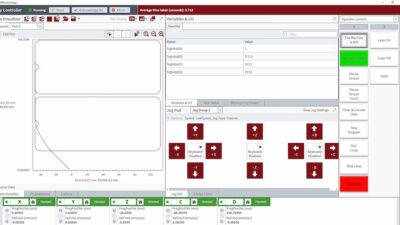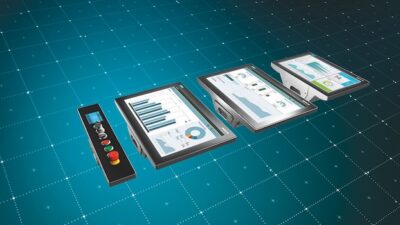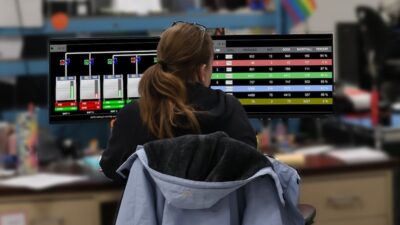If you're thinking of hurrying through the next upgrade of human-machine interface (HMI) or supervisory control and data acquisitions (SCADA) software by keeping all the same screen designs, think again.

Learning Objectives
- Three standardized HMI benefits are better productivity, technology that is easy to understand and cost efficiency.
- HMIs leveraging latest technology are now capable of supporting more advanced functionality, typically delivered as part of a SCADA system.
- The next-generation HMI creates an environment where operators and technicians are moving with the speed of manufacturing.
Human-machine interfaces (HMIs) have come a long way since their inception in the 1980s as computers became more prevalent in manufacturing, and today’s optimized plants deserve optimized HMI designs.
HMIs were developed so that humans could interact with the programmable logic controllers (PLCs) introduced in the 1970s to replace hardwired relay logic. In many ways, PLCs and HMIs revolutionized manufacturing by providing greater flexibility, greater control and increased insights.
Fast forward and not only has technology evolved, but users also have learned how to interact with it more effectively. Following the more is better approach, HMIs became inundated with information and alarms that presented every available piece of information, and there was a lot of it. No longer were we content with knowing a variable frequency drive (VFD) had faulted out, but we had the opportunity to inform the user which of the 300+ VFD faults available had caused the issue.
This is all great information, but it quickly became overwhelming and resulted in initiatives such as alarm management and situational awareness concepts to more effectively present information for human consumption. The concept of right information to the right person at the right time served as the basis for these more modern human interactions.
Most HMIs still run on flatscreen displays or monitors, but we have started to see what next-generation HMIs will look like. Augmented reality (AR) and smart glasses have begun to show up on the plant floor as operator interfaces and have proven successful, mostly around maintenance and parts assembly. As these technologies evolve and converge with artificial intelligence (AI) and heads-up displays, it’s easy to see how, in the not-so-distant future, we will no longer need displays and monitors.
Upgrading legacy HMIs
Even though future HMIs will look different from current displays and monitors, we still need to address short-term opportunities for making HMIs more user friendly by leveraging designs and technology available today. An operator’s ability to effectively interact with an HMI directly impacts the productivity of the manufacturing system he or she is controlling.
There are plenty of outdated HMI systems running manufacturing operations, many of which are several decades old. In many cases the approach is, “It works. we’ve learned to use it, so let’s not touch it.”
Hardware and software obsolescence and cybersecurity concerns usually are triggers to initiate HMI upgrades with added benefits of leveraging newer technology. No one wants to use a flip phone when a smartphone is available.
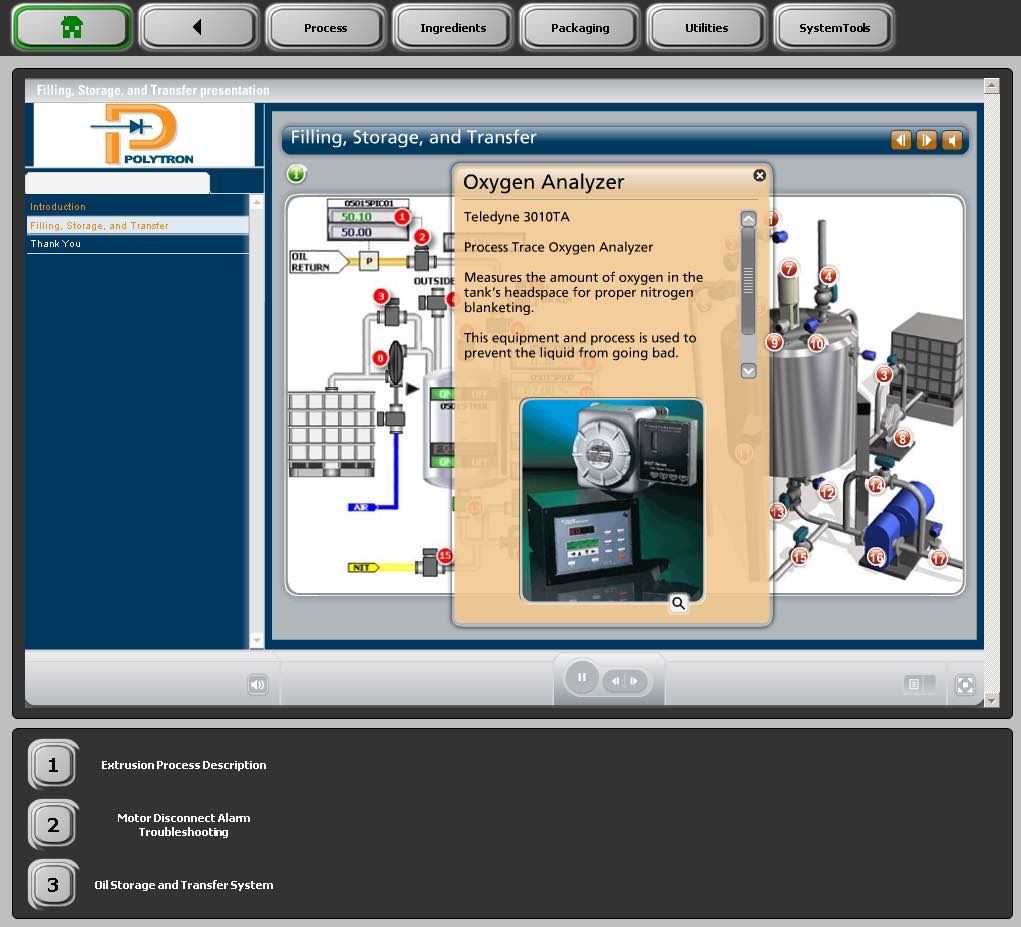
Upgrading legacy HMIs: 2 key concepts
Two key concepts exist for upgrading legacy HMIs:
- Keep the design the same, but move it to a newer hardware and software.
- Re-design the HMI to address known issues and leverage better designs and latest technology.
Arguments can be made for each. Using the flip-phone versus smartphone analogy, we can easily see the former approach leaves untapped opportunity. It should also be noted most manufacturers now have different environments and workforces then when these HMIs were initially deployed. The latest generation of workers has grown up with mobile devices, an application-based solution methodology (“There’s an app for that”), and omnipresent access to the internet to quickly find a solution. Today’s manufacturing environment demands a leaner workforce, higher machine and system efficiencies, greater flexibility, and increased productivity and quality targets, which requires higher HMI performance to support these demands.
Six HMI current designs and best practices
HMIs leveraging latest technology are now capable of supporting more advanced functionality, typically delivered as part of a supervisory control and data acquisition (SCADA) system or even manufacturing intelligence (MI) solution. Modern HMIs can support and leverage the following design and functionality:
- Mobility: Access is now more easily provided via smart phones and tablets without requiring screen redesign. A key for right information to the right person at the right time and supporting Leaner workforces. Wider access also broadens the audience that can participate in the upkeep of a system. Experts not on premises can contribute with a wealth of experience from afar. The pandemic has demonstrated the power of remote presence.
- Scoreboards: Adding large flatscreen monitors over key operating stations allows operators to very quickly see issues that need to be addressed, without having to walk over to the HMI and try to find the screen that describes the issue.
- Paperless: Forms, spreadsheets, and other manual data tracking mechanisms can now more easily be digitally supported. There really is no reason to still have paper on the plant floor.
- Control rooms: As workforce becomes leaner and each operator is required to support more automated equipment, concepts such as control room allow an operator to monitor multiple systems more effectively at one time. Distributed control room concepts present the best of both worlds: providing overview of many systems with the flexibility of having that overview in the hands of a constantly moving workforce.
- Situational awareness: This HMI design concept allows actionable information to be highlighted to operators using defined color coding over a grayscale background to highlight items requiring attention. This philosophy serves as a fundamental paradigm shift on translating data into actionable information. More emphasis is placed on “where should I be” versus “this is where I am.”
- Alarm management: Alarming on everything that deviates from the acceptable ranges has overwhelmed operators to the point where they ignore alarms. Developing priority levels to distinguish between actionable and informational alarms should be part of any HMI re-design.
HMI design standardization
HMI standardization is a core concept to effectively leverage a modern design. Standardization involves graphic standards, naming conventions, and application design concepts—a consistent look and feel to promote greater efficiency on the plant floor. It is the best practice of applying easily recognized visuals to increase the productivity at the point of use. As standards become applied on an enterprise scale, overall benefits multiply.
At the system and machine level, standardization provides consistency to promote user confidence regarding expectations on how things operate. For example, a button that takes the user back to the main menu should be placed in the same location every time it is used. If the location varies from screen to screen, confusion and inefficiency prevail. In addition, if controls for seldom-accessed devices work the same way as those for frequently accessed devices, then the user will have a basis on how to interact with them.
At the site level, users who move between manufacturing systems understand how controls work, regardless of assignment. Consistent controls between manufacturing systems benefit operations by allowing them to efficiently work on multiple systems more seamlessly. In addition, maintenance benefits from consistent troubleshooting capabilities across the systems. For example, a motor fault on line A is reported and reset exactly the same way as on line B. Consistent HMI systems reduce training effort for new and veteran operators.
The maximum benefit of HMI standardization is realized at the enterprise level. Users who move between sites know how to operate and troubleshoot more efficiently. Training and documentation become even more efficient. From a development perspective, operations with the proven best practices can leverage solutions across the enterprise.
For example, plant A may have more experience on the process while plant B has more experience on packaging. Plant A can leverage process solutions for both sites while plant B leverages packaging solutions. Standardization allows both plants to share solutions and maximize the capability across multiple sites. The result is a seamless workflow for the workforce to operate at the highest level of performance.
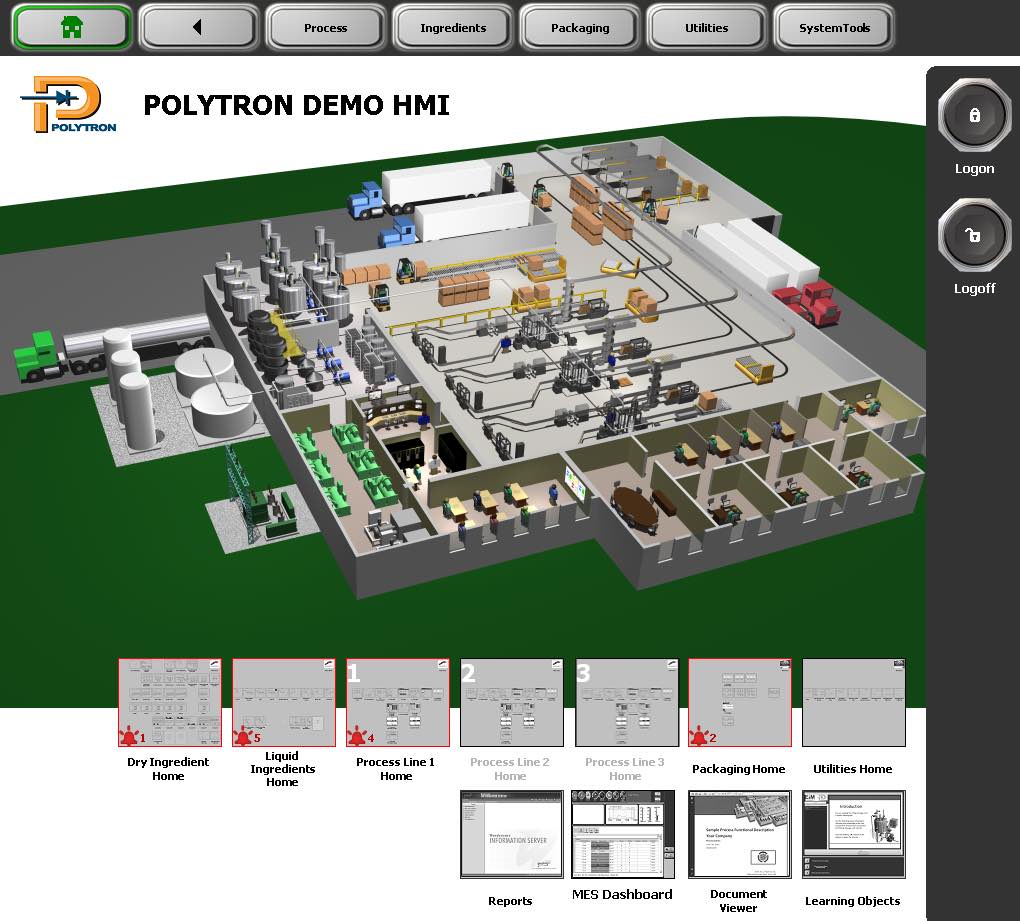
Three standardized HMI benefits
The standardized HMI also facilitates fast and easy training on changes or updates, and new employee training is consistent across the entire workforce. The three most important benefits of standardized HMI are:
- Increased productivity: The ease of use and functionality of HMI systems will increase overall equipment effectiveness and workforce productivity. The updated control system makes it easier to start, stop, troubleshoot, and make changes in production.
- Easy-to-understand technology: In addition to increased productivity for operators, other tasks improve as well. Training, troubleshooting, and line changes are simplified. A trained line operator can walk up to the HMI at any time and easily understand what is going on in a particular stage of production. Applied programming standards make it easy for users to dig deeper into the controls through the HMI to receive more information about a situation.
- Cost efficiency: The return on investment for HMI standardization is quickly recaptured through the efficiency it brings to operations through reduced downtime for equipment issue resolution and changes, and increased productivity by operators, maintenance, and engineering.
It’s important to focus on an efficient HMI design that functions well and looks good. Flashy animations and software might look impressive in an HMI demonstration, but they don’t contribute to the HMI’s effectiveness. In fact, they slow down the operator’s navigation to devices and information. It is an HMI best practice to turn data into actionable information.
Next-generation HMI
The new software and hardware technology available today presents the opportunity for the next generation HMI to provide information, not just data. It has flooded users with data, but the challenge is extracting actionable information at the point of use.
The flexibility of the HMI can bring the information to the operator anywhere on the plant floor, and the large flat panel displays or scoreboards on the plant floor bring information to users where needed. With a glance, users can understand how the line is performing, display faults, warnings, quality issues, and performance to established key performance indicators (KPIs) and production goals. This real-time information allows the operator to make the appropriate decisions and changes to meet or exceed targets.
Other interactive interface devices, such as smartphones and tablets, connect with the same customized and standardized view of actionable information delivered to those who need it, where they need it, anywhere in the enterprise. Smartphones provide a window into KPIs, critical faults, and quality issues, allowing the ability to make higher level decisions for overall operational excellence. View the original article and related content on Control Engineering. “Standardizing control room HMIs”
Tablets provide mobile wireless HMI for diagnostics and troubleshooting. Using a tablet as a troubleshooting tool puts the HMI where the technician needs it, typically on the plant floor and always on the move.
Four ways to improve workflow
Workflow software provides a logical extension to the HMI. The HMI provides a here-is-what-is-happening, here-is-what-is-wrong view. Shared workflow provides the now-what to the equation for information on the location of the root cause of the alarm or quality issue, and the action to take to correct it. The addition of standardized workflow in next generation HMIs raises the level of operational efficiency to the next level.
Workflow can be applied in several different ways:
- Standard operating procedures: Streamline and send a consistent message on how things should be done
- Changeovers and machine setup: Track critical planned downtime events and provide feedback to increase efficiency when not in production
- Online reference and documentation: Provide relevant reference information at the appropriate time and place; supplement training with quick references, single point lessons, and interactive tutorials
- Fault correction: Provide troubleshooting procedures for machine stops, quality issues, and performance deviations.
Data gathered from the workflow provides an electronic record of what happened when to ensure procedures are being followed. This helps close the loop on continuous improvement initiatives.
Supported by a smart HMI, and armed with and actively broadcasting information, operators and technicians can move seamlessly through the facility with confidence to keep production at the highest level. Workflow augments training by providing real-time and pertinent access to standard procedures, troubleshooting guides, and valuable reference material. Automated escalation of critical faults and quality issues ensures the right people are informed at the right time to take right action.
The next-generation HMI creates an environment where operators and technicians are moving with the speed of manufacturing and looking ahead to make decisions to impact the bottom line of the business.
Chris Parkinson is a smart manufacturing system architect at Polytron Inc. Edited by Chris Vavra, web content manager, Control Engineering, CFE Media and Technology, [email protected].
MORE ANSWERS
Keywords: human-machine interface, HMI, supervisory control and data acquisition, SCADA
CONSIDER THIS
How are your upgrading your HMI and SCADA systems and what have the results been?

